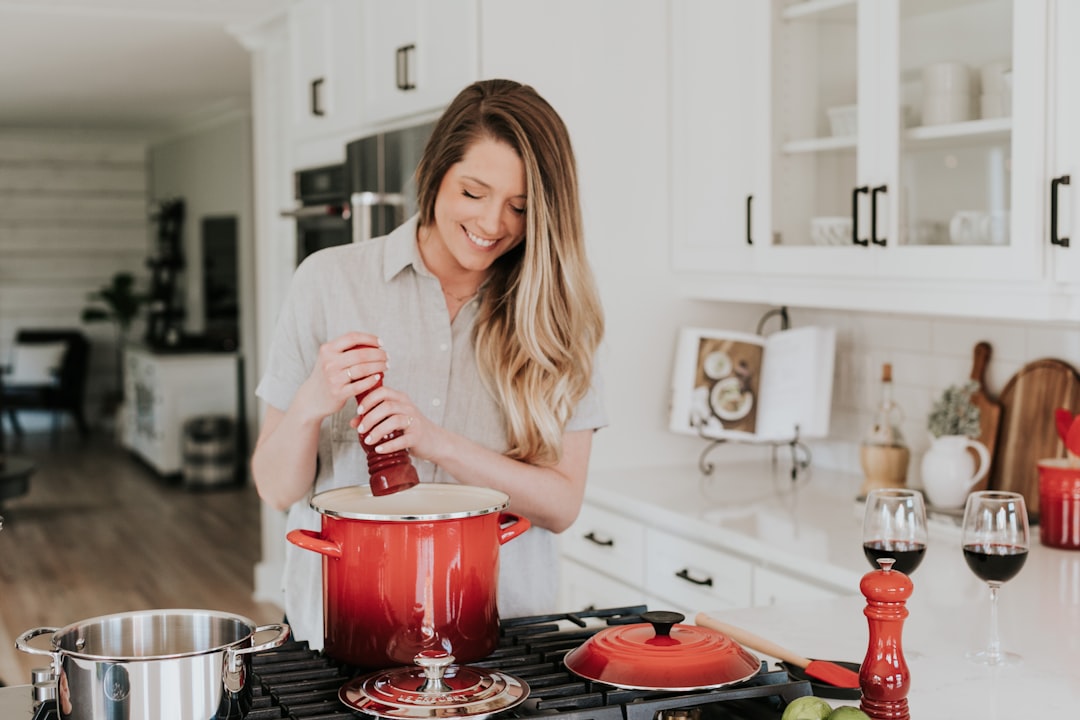Growing Grapes in Pots: A Guide to Container Gardening

Container gardening is a popular method of growing plants in pots or containers instead of traditional garden beds. It offers numerous benefits, including the ability to grow plants in limited spaces, easy mobility, and the ability to control soil conditions. One plant that can thrive in containers is grapes. Growing grapes in pots can be a rewarding experience, allowing individuals with limited space or unfavorable climates to enjoy the beauty and taste of fresh grapes.
While container gardening offers many advantages, it also presents unique challenges. The limited space and restricted root growth can affect the overall health and productivity of the plants. Additionally, container-grown plants require more attention and care compared to those grown in the ground. However, with proper planning and maintenance, growing grapes in pots can be a successful endeavor.
Key Takeaways
- Container gardening is a great way to grow grapes in small spaces or on balconies.
- Choose grape varieties that are suitable for container gardening, such as dwarf or patio varieties.
- Use large containers with good drainage and support for the grapevine.
- Provide well-draining soil and regular fertilization to ensure healthy growth.
- Water regularly and prune and train the grapevine to maximize fruit production.
Choosing the Right Grape Variety for Container Gardening
When selecting grape varieties for container gardening, several factors need to be considered. First and foremost, it is important to choose grape varieties that are suitable for your climate. Some grape varieties are better suited for cooler climates, while others thrive in warmer regions. It is also important to consider the size of the container and the available space for growth.
Some recommended grape varieties for container gardening include ‘Pixie’, ‘Pinot Meunier’, ‘Black Monukka’, and ‘Flame Seedless’. These varieties are known for their compact growth habits and adaptability to container environments. They also produce flavorful grapes that are perfect for eating fresh or using in recipes.
Selecting the Best Container for Growing Grapes
Choosing the right container is crucial for the success of growing grapes in pots. There are several types of containers suitable for growing grapes, including plastic pots, wooden barrels, and ceramic containers. It is important to choose a container that is large enough to accommodate the root system of the grapevine and provide adequate drainage.
The size and depth requirements for grape containers depend on the specific variety being grown. Generally, a container with a minimum diameter of 18 inches and a depth of at least 24 inches is recommended. This allows enough space for the roots to grow and prevents the plant from becoming root-bound.
When it comes to materials, plastic pots are lightweight and easy to move, but they may not provide adequate insulation for the roots. Wooden barrels are a popular choice for their aesthetic appeal and insulation properties. Ceramic containers are also a good option, as they provide good drainage and insulation. Ultimately, the choice of container material depends on personal preference and the specific needs of the grape variety.
Soil and Fertilizer Requirements for Container-Grown Grapes
| Soil and Fertilizer Requirements for Container-Grown Grapes | |
|---|---|
| Soil Type | Well-draining soil mix with pH between 5.5 and 6.5 |
| Fertilizer Type | Slow-release fertilizer with balanced NPK ratio |
| Fertilizer Application | Apply fertilizer every 4-6 weeks during growing season |
| Amount of Fertilizer | 1/4 to 1/2 cup per plant per application |
| Additional Nutrients | Apply micronutrients and trace elements as needed |
| Soil pH Monitoring | Regularly monitor soil pH and adjust as needed |
Proper soil and fertilizer management is essential for the health and productivity of container-grown grapes. The soil in grape containers should be well-draining to prevent waterlogged conditions, which can lead to root rot. A mixture of potting soil, compost, and perlite or vermiculite is recommended to ensure good drainage while retaining moisture.
Fertilizer requirements for grape containers vary depending on the specific needs of the variety being grown. Generally, a balanced fertilizer with equal amounts of nitrogen, phosphorus, and potassium is recommended. It is important to follow the manufacturer’s instructions for application rates and frequency.
To maintain soil fertility in grape containers, regular feeding with organic matter such as compost or well-rotted manure is beneficial. This helps replenish nutrients and improve soil structure over time. Additionally, periodic soil testing can help identify any nutrient deficiencies or imbalances that need to be addressed.
Watering and Maintenance Tips for Potted Grape Plants
Proper watering is crucial for the health and productivity of container-grown grapes. The frequency and amount of water needed depend on various factors such as climate, container size, and plant size. Generally, grape containers should be watered deeply and thoroughly, allowing the soil to dry slightly between waterings.
To prevent overwatering, it is important to ensure that the container has adequate drainage holes. Excess water should be able to freely drain out of the container to prevent waterlogged conditions. Mulching the soil surface with organic matter can also help retain moisture and reduce evaporation.
Maintenance tips for grape containers include regular pruning and training to control growth and promote fruit production. Grapevines in containers tend to have limited space, so it is important to remove any dead or diseased wood and maintain a balanced structure. Additionally, regular monitoring for pests and diseases is essential to catch any issues early and prevent them from spreading.
Common problems in grape container gardening include fungal diseases such as powdery mildew and pests such as aphids and spider mites. These can be managed through proper sanitation, regular monitoring, and the use of organic or chemical control methods when necessary.
Training and Pruning Techniques for Container Grapevines

Training and pruning are important aspects of growing grapes in pots. Proper training helps control growth, maximize fruit production, and maintain an aesthetically pleasing shape. Pruning helps remove dead or diseased wood, improve air circulation, and promote new growth.
The techniques for training and pruning grapevines in containers are similar to those used for grapes grown in the ground. The main goal is to create a well-balanced structure with an open canopy that allows sunlight to reach all parts of the plant. This can be achieved through techniques such as cane pruning, spur pruning, or a combination of both.
Timing and frequency of training and pruning depend on the specific variety being grown and the desired shape. Generally, pruning is done during the dormant season in late winter or early spring before new growth begins. Training can be done throughout the growing season as needed to direct growth and maintain the desired shape.
Managing Pests and Diseases in Container Grape Gardening
Container grape gardening is not immune to pests and diseases. Common pests in grape container gardening include aphids, spider mites, and mealybugs. These can be managed through regular monitoring, the use of insecticidal soaps or oils, and the introduction of beneficial insects such as ladybugs.
Fungal diseases such as powdery mildew and downy mildew can also affect grapevines in containers. These can be prevented by providing good air circulation, avoiding overhead watering, and applying fungicides when necessary. Organic options such as neem oil or sulfur-based products can be used for disease control.
It is important to note that prevention is key when it comes to managing pests and diseases in container grape gardening. Regular monitoring, proper sanitation, and maintaining a healthy growing environment are essential for preventing infestations and disease outbreaks.
Harvesting and Storing Container-Grown Grapes
Harvesting grapes from container-grown plants is an exciting moment for any gardener. The signs of grape ripeness vary depending on the variety being grown, but generally include a change in color, a slight softening of the berries, and a sweet aroma. It is important to harvest grapes at their peak ripeness to ensure the best flavor and quality.
Harvesting techniques for container-grown grapes involve gently twisting or cutting the clusters from the vine using clean pruning shears. It is important to handle the grapes with care to avoid damaging the berries or causing bruising.
After harvesting, grapes can be stored in a cool, dark place for a short period of time. However, they are best enjoyed fresh and should be consumed within a few days of harvest. If longer storage is desired, grapes can be frozen or used to make preserves or juice.
Using Container-Grown Grapes for Wine, Juice, and Culinary Purposes
Container-grown grapes can be used in a variety of ways, including making wine, juice, and culinary creations. For those interested in winemaking, container-grown grapes can be used to produce small batches of homemade wine. There are numerous resources available online and in books that provide detailed instructions on the winemaking process.
Container-grown grapes can also be used to make fresh grape juice or incorporated into recipes such as salads, desserts, and jams. The sweet and juicy flavor of fresh grapes adds a delightful touch to a wide range of dishes.
Benefits and Challenges of Growing Grapes in Pots
In conclusion, growing grapes in pots offers numerous benefits for individuals with limited space or unfavorable climates. Container gardening allows individuals to enjoy the beauty and taste of fresh grapes without the need for a large garden or vineyard. It also provides the flexibility to move the plants as needed and control soil conditions.
However, container gardening also presents unique challenges. The limited space and restricted root growth can affect the overall health and productivity of the plants. Additionally, container-grown plants require more attention and care compared to those grown in the ground.
Despite these challenges, with proper planning and maintenance, growing grapes in pots can be a successful endeavor. By choosing the right grape variety, selecting the best container, providing proper soil and fertilizer management, and implementing appropriate training and pruning techniques, individuals can enjoy the beauty and taste of fresh grapes from their own container garden.
If you’re interested in learning more about growing grapes in a pot, you might find this article from Lawn World quite helpful. They provide a comprehensive guide on how to successfully cultivate grapes in containers, offering valuable tips and insights. Whether you have limited space or simply prefer the convenience of container gardening, this article will equip you with the knowledge you need to embark on your grape-growing journey. Check it out here for a wealth of information on growing grapes in pots and other gardening topics.
FAQs
What is the best type of pot to grow grapes in?
The best type of pot to grow grapes in is a large container with drainage holes. It should be at least 15-20 gallons in size and made of a durable material such as terracotta or plastic.
What kind of soil should I use to grow grapes in a pot?
Grapes prefer well-draining soil that is rich in organic matter. A mix of potting soil, compost, and perlite or sand can provide the ideal growing conditions for grapes in a pot.
What variety of grapes is best for growing in a pot?
Dwarf or compact grape varieties are best suited for growing in a pot. Some popular options include ‘Pixie’, ‘Pinot Meunier’, and ‘Black Corinth’.
How much sunlight do grape plants need when grown in a pot?
Grape plants require full sun to thrive, so it is important to place the pot in a location that receives at least 6-8 hours of direct sunlight per day.
How often should I water my grape plant in a pot?
Grape plants in pots should be watered regularly, but not overwatered. The soil should be kept moist, but not waterlogged. Depending on the climate and pot size, watering may be required every 2-3 days.
Can I grow grapes in a pot indoors?
While it is possible to grow grapes in a pot indoors, it is not recommended. Grape plants require full sun and outdoor conditions to thrive, so they are best grown in an outdoor setting.



